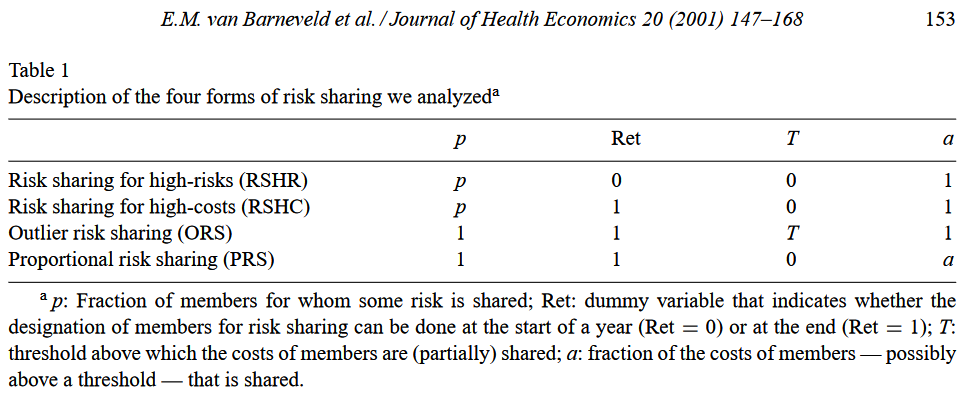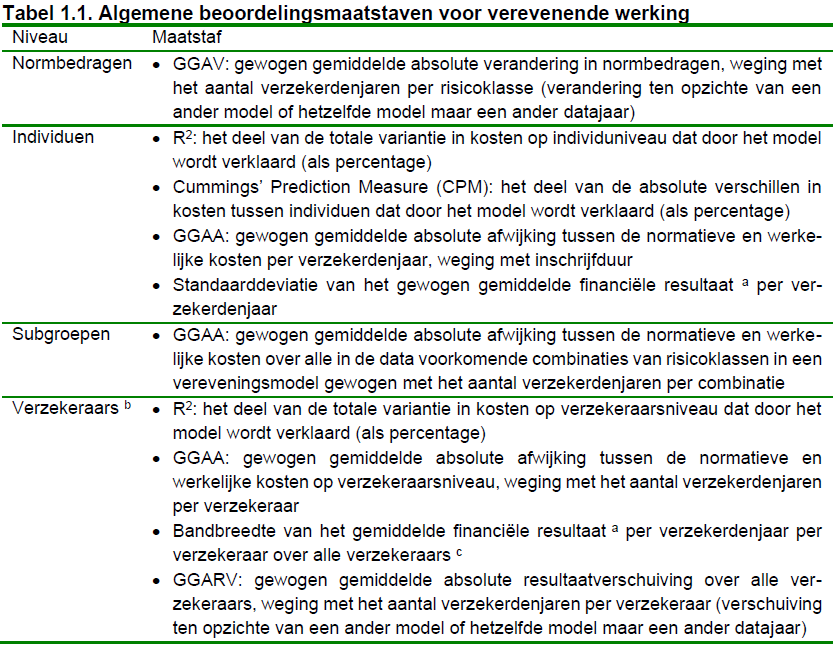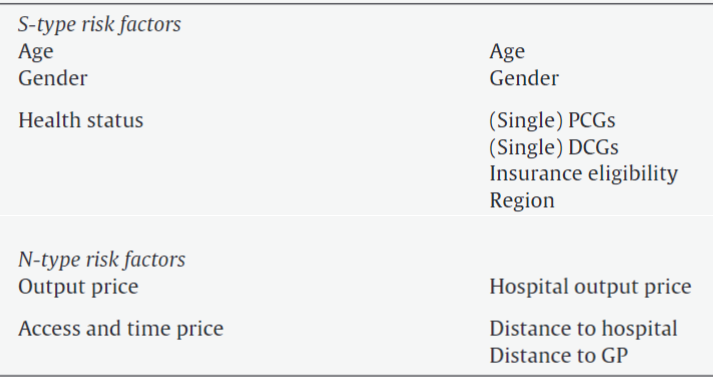
The math of risk equalization
June 27th, 2023
Meet & greet
- What do you expect to learn from this course?
- My agenda
- First, an intro to the math
- Second, applying it to some data
- R package
rvedatabased on my PhD thesis
Context
Data collection
- Large national data set
- Population vs. sample
- Weights for insurance period
- Multiple records per insured
- Pseudonyms for merging data sets
Which are the “acceptable costs”?
“The costs of services that follow from a quality, intensity and price level of treatment that the sponsor considers to be acceptable to be subsidized.” (Van de Ven and Ellis, 2000)
Two extremes:
- Best practice costs
- Actual expenditures
Q: which is more health based?
🇳🇱: Y = actual expenditures with average prices for some services
Which subgroups to compensate?
“The REF equation should only include parameters which equalize cost differences in health status of an insured as a consequence of differences in age, gender and other objective measures of health status.” (Health Insurance Decree:389, p.23)
Compensation for S(olidarity)-type groups
- Age
- Gender
- Health status
No compensation for
N(on-solidarity)-type groups
- Propensity to consume
- Input prices
- Regional overcapacity (SID)
- Provider practice style
The regression equation
Y=f(S,N)+u=Sα+Nγ+u=L∑l=1Slαl+M∑m=1Nmγm+u
with
- Y health expenses observed during some period in time
- Sl is the lth S-type risk factor, l=1,...,L
- Nm is the mth N-type risk factor, m=1,...,M
- (u∼IID(0,1))
Which causal diagram?

Big assumption
Define v:=Nγ+u and rewrite Y=Sα+Nγ+u⟺Y=Sα+v
⟹ˆα=(S′S)−1S′Y=(S′S)−1S′(Sα+v)=α+(S′S)−1S′Nγ+(S′S)−1S′u
⟹E[ˆα|S,N]=α⟺{S′N=0γ=0
What to do if assumption fails?

Schokkaert and Van de Voorde () recommend a 2-step method:
- estimate (α,γ) in regression with S and N variables
- predict Y with N set at prevalences
The formula then reads as follows:
ˆY=Sˆα+¯Nˆγ with ¯N being a row i/o matrix.
Or… ignore this omitted vars bias
In practice, we apply this equation:
Y=Xβ+ϵ
and try to extend X with as much (measurable) S-type variables as possible.
Regression without an intercept
Traditional OLS:
- include an intercept
- omit one category of age/gender
- omit one category of each other X (which one?)
OLS w/ risk equalization:
- do not include an intercept
- include all categories of all other X’s
- set total effect of age/gender := sum of Y
- set total effect of each other X := 0
Apply weights
- Weights W define length of insurance contract
- 0<W<=1
- Potential reasons for W<1:
- 2 or more records for 1 individual -> sum Y and X
- babies born
- people deceased
Use aggregation to save computer time
- “Vertical aggregation” for each unique combination of X
- Total number of rows = number of unique combinations
- W := sum of observations for each unique combination
- Y := average expenses ¯Y for each unique combination
- X := set of prevalences ¯X for each unique combination
- OLS estimation using these W, Y and X
- Bekijk mijn blog voor een eenvoudig voorbeeld
Region: individual & zip code data
- In 2002 a two-step approach was implemented:
- step 1: Y=Xβ+ϵ (indiv. level)
- step 2: ϵ=Z∗c+ξ (zip-code level)
- As ˆϵ=Y−ˆY step 2 can be read as:
- step 2: Y=1.ˆY+Z∗c+ξ
- Implicit restriction: ˆY and Z not correlated
- If this assumption is false, the estimators are inconsistent
- Therefore, ˆY was added to step 2 since the 2006 model
- Nowadays, one comprehensive regression at indiv. level
(Ex post) risk sharing
Definition: insurers are retrospectively reimbursed for some of the costs of some of their insurance members (Van de Ven and Ellis 2000)

Assessment framework

Install package rvedata
Metadata
rvedata![]()
De inhoud van deze slides is beschikbaar onder de Creative Commons Naamsvermelding-GelijkDelen 4.0 Internationaal licentie.
De broncode voor het genereren van deze slides is beschikbaar op GitHub onder de MIT licentie.
Copyright (c) 2023 Piet Stam.

